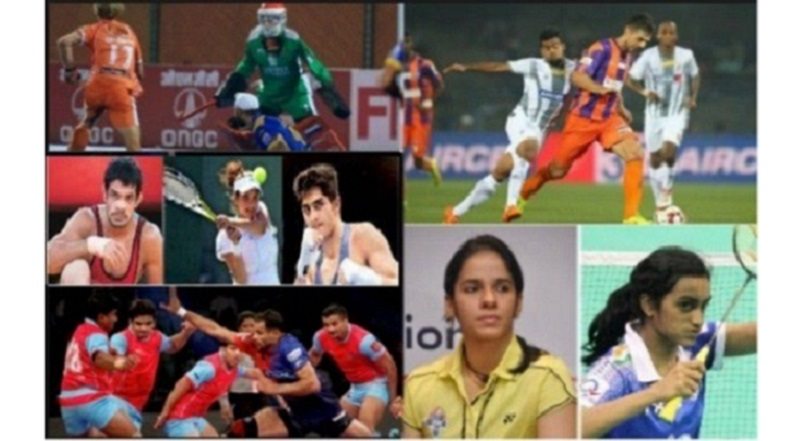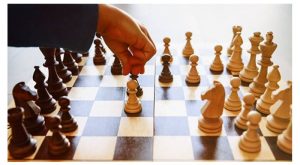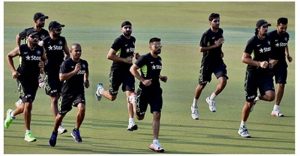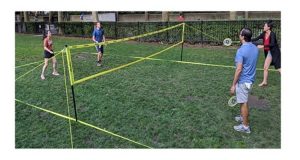
Women’s participation in sports has been traditionally very low. The first modern Olympic games in Athens (1896) had no participation of women. Women started participating in Olympics from the year 1900 onwards. In the last few decades, participation of women in sports has increased tremendously, even in India. Nevertheless, in India, the general social environment still inhibits women from participation in sports.
Need to Study Gender Stereotyping in Sports
Sports as a discipline requires strength and men are considered more stronger than women. However, over the years, women have raised their fitness and strength levels tremendously. Women participation in sports in other countries is much higher, and the Olympics statistics also reveal that half of the athletes that compete in the Olympics are now women.
However, things stand different in India; besides a general lack of interest in sports, gender bias is another major reason why less women are participating in sports. Gender inequality and gender biases are commonly evident in sports in India. While women in cities are educated and many of them earn their own living, participation in sports remain abysmally low, as the society continues to see women from a different prism.
Even the top sportspersons in India have faced discrimination at the hands of coaches, authorities, and even their own families due to gender biases. India’s former sprint queen P.T. Usha broke down in tears in front of media due to the apathy from authorities.
Women make up half of the world’s population, and in India they comprise 48% of the total population but they lack opportunities in sports India, which is why India is yet to see a female Sachin Tendulkar.
Things may seem to be changing in India – the economy is growing, the middle class is growing and had more disposable income now, people are becoming more fitness conscious and playing sports although the percentage still remains small.
Successes of women sportspersons such as Mary Kom, PV Sindhu, Saina Nehwal, Hima Das in recent times would give hope to many sportswomen in India. However, for a 1.3 billion population, just three-to-four names doesn’t augur well for women in sports in India and there is a need to study gender stereotyping in detail.
Gender Stereotyping Depicted in Movies
Gender stereotyping is prevalent in most societies, but it seems to be more in India as people seem to be conditioned to believe certain things based on the gender of a person.
Gender stereotyping of women in sports has also been depicted in movies. In the movie ‘Dangal’, no one believes that the two young girls would go on to become professional wrestlers.
For many in the Indian society, women are expected to marry, have kids and look after the family. In the movie Panga, the female protagonist who happens to be a former national level kabaddi player had to give up her sports dream after her son is diagnosed with some illness which requires close care.
In the movie Chak De, the fiancé of a women hockey player tells her to quit sports and just sit at home as women in hockey had no career in India.
When P.T. Usha Broke Down in Front of Media
While things are changing now, although slowly, in terms of the facilities offered to sportspersons during sports meet and competitions, in the past things were different and even top sportspersons suffered due to apathy from authorities.
India’s former star athlete P.T. Usha broke down in tears in front of media due to the substandard accommodation that was given to her when she came to attend a National Open Athletics meet. She was appalled because she felt that if a known sports person like her could get such a sub-standard treatment from the authorities, the younger women in sports would have to suffer even more.
Challenges Faced by Women in India
While Sports in India is yet to reach its peak, the sports scene in India has undergone noteworthy change in the last decade or so, with several sports league underway and Indians winning laurels at international competitions, although the percentage remains quite low considering the overall population.
In India, for women, it’s very difficult even to pursue seemingly simple things such as primary education, so it is very unlikely that they will be able to participate in sports without any social hurdles.
Women are seen as week, and the society expects them to be busy with family related work. Lot of people in India, in general, assume that girls would be less interested in sports. Even in cities, many are surprised to hear that girls are pursuing sports seriously, and in rural areas, it raises many eyebrows. Sports people generally have good postures and they walk straight, but in Indian society, especially rural areas, girls are told not to walk straight and/or with their head held high, and if they appear to be muscular, they are termed as ‘masculine’, which deters many girls from playing sports.
While women would like to believe that they are made of stronger stuff, which can be seen from the successes that some of the women in India have had in sports, majority of them do get discouraged from the lack of support and the disparaging comments they receive from people all around.
And even in sports, women are expected to stick to indoor games such as badminton and are not encouraged to take up challenging sports, because those are seen as male strongholds. Most parents and teachers are less supportive, provide less encouragement to girls who want to experiment with less stereotypical sports such as Football, Rugby, weightlifting.
Most training facilities for sports also seem to be giving more importance and focus to men, which reflects in the emotional outburst from former Indian athlete PT Usha. In most schools and clubs that have sports activities, boys and girls seem to get different treatment, with women receiving less amount of time at training time.
In order to bring about a change in people’s attitudes, families, authorities and states need to work together to provide encouragement and support to women, and they need to celebrate their small successes. Sports clubs and schools should ensure the promotional materials use photos that has a mix of both girls and boys, as that will help portray the women in better light. Sports authorities need to provide adequate facilities, including safety measures to women when they are participating in away tournaments and sports camps.
Overall, there is a need to provide a more conduce environment for women to participate in sports in India, and when this happens more sportswomen will bring greater laurels to the country.
BBC report on Women in Sports
A recent BBC report suggests that approximately 75% of the Indian population believe sports is significant in their day-to-day lives. However, only 36% of the population engage in any sort of sport or physical activity. When these statistics are disintegrated, research reveals the following indications:
Key Findings of the report:
- 42% of men and 29% of women engage in sports.
- Individuals in the age bracket of 15-24 actively engage in sports.
- Percentage of the unmarried people play sports – 54%.
- Percentage of married or divorced people play sports – 30%.
Percentage of the population not currently participating in sports or physical activities – 64%. 69% of the respondents said they played sports during their school time or in their neighbourhood.
People’s point of view towards women in sports
The research indicated that 41% of the respondents felt sportswomen are on par with sportsmen. Although, 33% of the Indians surveyed are of the opinion that sportswomen are not on par with sportsmen.
A little more than 33% of the respondents feel sports like Boxing, Weightlifting, Kabaddi, Motorsports are not appropriate for women. The reasons include 29% of the respondents feel women do not have the necessary strength to play sports, it is not safe for women to play and women cannot play sports during all times.
Santanu Chakrabarti, Head of Audience Research, BBC World Service states, “Our research shows attitudes towards women and women’s sports in India are complex, contradictory and counterintuitive. The research project – one of the biggest and most rigorous quantitative studies of its kind – shows that real progress has been made in terms of attitudes towards women and women’s sports yet some age-old stereotypes retain a hold on the imagination. It shows that the idea of gender equality has become quite commonplace among the Indian population, even if this doesn’t always match with other views held. Most fascinating are the differences across the states, where attitudes sometimes conform to but more often than not completely upturn what people may expect.”Gender inequality in Cricket
According to the research, 15% of women play cricket compared to 25% of the men in India. The figures show that there is huge gender inequality in cricket. In kabaddi, there is less inequality, figures show 15% of men and 11% of women participate in the sport.
States with the highest participation rate
Southern states of India, Maharashtra and Tamil Nadu have the highest participation rate in sports and physical activities with 54% and 53% respectively. However, in Punjab and Haryana hardly 15% population engage in sports.
Viewers of women’s sports
Regarding the viewership of female sports, just 34% of the population in India listen to news about female sports, and just 18% of the population have said they have watched female sports. For men’s sport, 24% have said that they watched it.
The following figures are some more findings from the BBC research:
- 42% of the individuals said they watched women playing sports for the first time in the second half of 2019. This shows that people recently started actively watching female sport.
- People consume female sports from news channels, sports channels, and not from the internet.
- Almost 50% of the nation believes that there is excessive reporting of female sport.
- 57% of people who follow female sport believe that there was greater coverage of it in 2019 than in 2018.
- The second season of Women’s T20 challenge (took place in 2019) professed to be the single greatest viewed female sports event in India. The tournament was established by the Board of Cricket Control in India (BCCI) in 2018.
Most well-known sports superstars
The research of the BBC indicated that 74% and 80% of the individuals could not name a single male and female athlete at an international level respectively. 18% of the respondents mentioned Sania Mirza among, an international tennis player with several grand slam doubles trophies. 21% of the respondents mentioned Sachin Tendulkar.
Closing Thoughts
There is no doubt that sports has always been considered to be the bastion of male because it is associated with strength and muscle power. However, women in India face a different set of challenges, compared to men, when it comes to participation in sports, and it is often influenced by gender roles.
The society in most parts of India continue to look at women as someone who belong at home and whose main responsibilities should be home-making and childrearing. Less participation of women in sports in India can be attributed to reasons such as psychological, financial as well as family issues. For those, who are already into sports, harassment by coaches and administrators also is a challenge, which makes many of them to discontinue in sports.
Women, on the contrary, refuse to believe that they lack strength and believe that doing well in sports has an empowering effect on them. Besides, sport as a means to improve physical health as well as a motivator for excellence has relevance to women as well. Also, over the years, the physical strength and endurance of women in sports have increased significantly with a few Indian women doing well in international sports. However, that does not seem to have change the perception of the masses in India and gender stereotyping continues to exist in the society, which is one of the main reasons why women still receive secondary treatment when it comes to sports and related policies.
It is important that women be provided with all the encouragement that is possible to increase their participation in sports and also to encourage them to go the distance. Sports bodies should address cases of discrimination faced by women in sports in India and should also remove hurdles to increase participation of women in sports.
This would require creating an atmosphere that is more rewarding to women, and all traces of discrimination at the psychological and policy levels should be removed. This will also require adequate support from the family, the community as well as the state.








